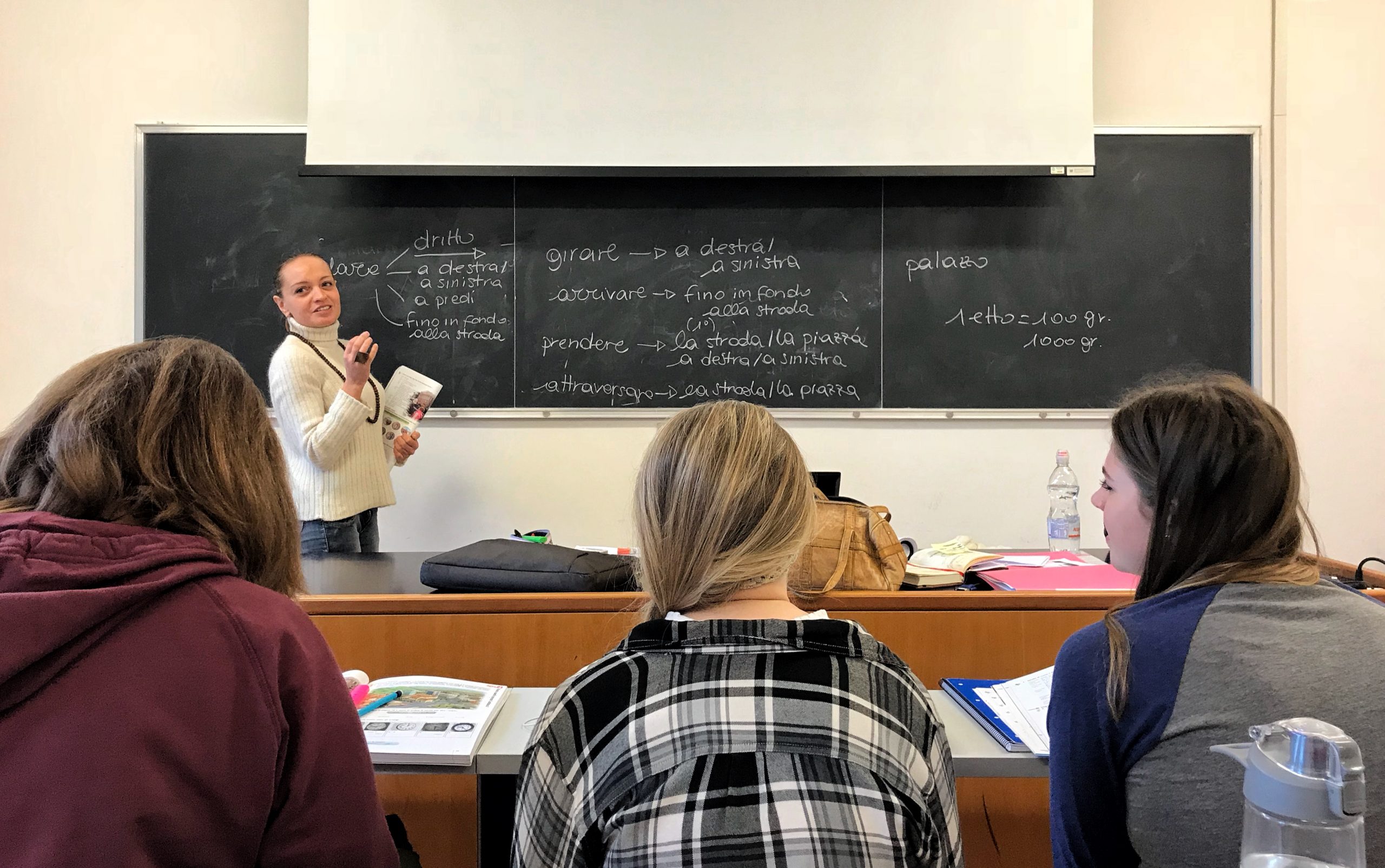By Audrey Comer, senior in advertising
The old renaissance city of Urbino rests on a hilltop in the foothills that stretch through the Marche region of Italy. It’s charming, it’s historic, it’s quietly alluring. When you’re in Urbino, you’ll find you’re in a beautiful balance of marveling at the charms of the city and feeling like it has been your home for ages. Getting to live in Urbino has felt like being let in on a wonderful little Italian secret.
A typical day in Urbino goes something like this…
Morning
It’s a Thursday today in late March. The weather is finally warming up after an unusually long spell of cold and wet weather.
I head into town around 10:30 a.m. for class at 11. As the weather gets warmer, I’m more inclined to walk into town sooner, whether that’s to grab a cornetto and caffe at Caffe Basili or to pass time on the steps of the Duomo with my journal and a good playlist. When it’s nice weather, Urbino is a pretty happening place, and there’s no sense sitting around in my dorm room at the Collegio Colle. Still, though, I’m not much of a morning person, so some mornings I’m out the door with only enough time to get to class.
The walk to class from the dorm is beautiful, albeit entirely uphill. It offers a panoramic view of the mountainous landscape and the Ducale Palace above the valley below. In fog, snow, rain or shine, that view is grand.
The day is made up of three classes—today it’s Renaissance political thought, mobile photography and art history. Other days we have Italian language and Renaissance literature classes. Class time is made up of lecture and some discussion, although it’s not uncommon to have class visits to see the art and history in buildings around Urbino or nearby cities like Fano and Pesaro, as well as longer trips to Florence, Siena and Rome. Museums, monuments and hundreds-year-old churches make for a great classroom.

Our classes last two hours and we typically get a pausa in the middle of each one. That’s a five- or ten-minute break to refill the water bottle, grab a coffee or just talk amongst each other. It’s a nice reset, and it shows how Italians appreciate taking things easy. After the break, we return to political thought and listen as our instructor Raffaella explains the political importance of Thomas Hobbes’ Leviathan.
Lunch
We have an hour for lunch between 1 and 2 p.m. A typical day means lunch at the Mensa Duca (the university cafeteria located in town). It’s a few blocks from the classroom. Today they’re serving lasagna, roasted chicken, mixed vegetables and fries. The love of pasta isn’t just an Italian stereotype — multiple pasta dishes are available at every meal. The Mensa’s not bad, but it’s no Michelin star, either. The menu is only in Italian, and the people working there have little patience for my elementary-level language skills. But, if you point at the food you want and smile a little, you’ll end up with what you’re asking for. Usually.
After lunch, a few of us head to Sorbetto del Duca in the main piazza for gelato. I decide on salted caramel and biscotto. “Decide” is a loose term, though, because caramel and biscotto is always my go-to flavor. Others get strawberry, Nutella, stracciatella, coffee and dark chocolate. We walk back to the classroom, our cones in hand.
Afternoon
We have two hours of art history. Today we’re discussing and analyzing art by early Renaissance artists like Masaccio and Botticelli. Marilena, the professor, is passionate about art history. She makes the class interesting and engaging, and the time passes pretty quickly.
In photojournalism, it’s a critique day. Deni, our professor, pulls up the photos from our last assignment, where we made photographs with a ‘strong human element,’ and we discuss the strengths and weaknesses in our work.
Evening
Classes conclude today at 6 p.m. Some people head back to the dorms, and some of us stop for aperitivo at Sugar Café. Giovanni, one of the owners, gives us a warm welcome as we file into the little café and fill up a table in the back. We order glasses of wine, and Giovanni brings us a few plates of finger foods to snack on while we sip our wine and chat until it seems there’s nothing left to talk about.
When we get back to the dorms, we eat dinner at the Mensa Tridente. Tonight, it’s slightly different versions of the same basic options: pasta, meat, vegetables and fries. And again, it’s decent. We sit at two tables in the middle of the cafeteria and eat without much complaint of the food.
Around 10 p.m., about a half-dozen of us get together and head into town for the bars. Thursday nights are pretty lively in Urbino. We meet up with Italian friends and friends from other American universities and get cocktails at Art Café, play pool at Piquero and dance at Bosom Pub. It’s a solid end to a good week in Urbino.
Audrey Comer is a senior studying adverstising at Iowa State University.
This post is one in a series of blog posts written by Iowa State University students who studied abroad in Urbino, Italy, in spring 2018 with Deni Chamberlin, Greenlee School associate professor. The program focuses on mobile image making, Italian language, Renaissance art history and literature and the history of food and culture. The Greenlee School of Journalism and Communication will offer the program in collaboration with LAS Study Abroad in spring 2020.
